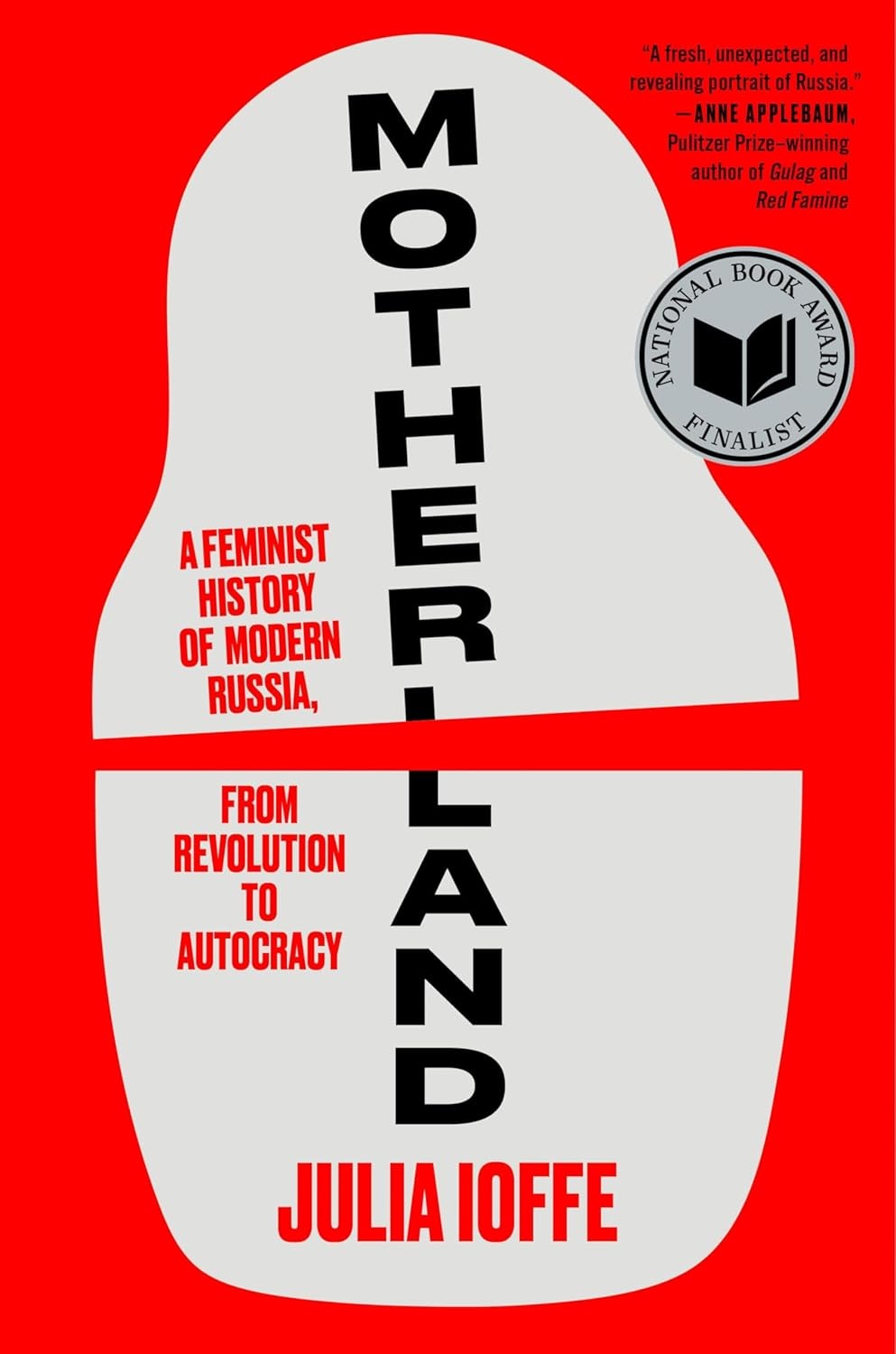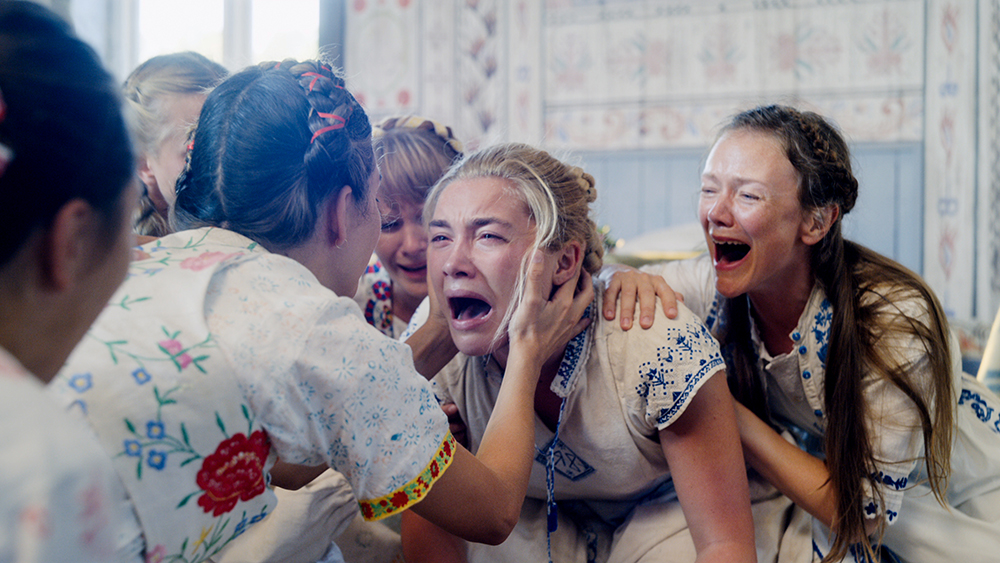To read Julia Ioffe’s new book, *Motherland: A Feminist History of Modern Russia, from Revolution to Autocracy*, is to take a rambling ride—or a crash course, if this is new territory—through the last century of Russian history, as the ghosts of grandmothers past whisper in your ear.
Ioffe, a Russian-born journalist, came to America with her family in 1990 at age seven. When she returned in 2009, the country she remembered was long gone.
Ioffe’s sister became the fourth generation of women doctors in their family. But in Moscow, Ioffe met women from similar backgrounds “obsessed” with lassoing wealthy men, regardless of their character. Even the educated former wife of an oligarch’s son is defined by her ex, as she grudgingly admires the skills of the young woman who snagged him next.
“Everyone makes fun of these women,” the thirtysomething divorcée tells Ioffe, but “they’re geniuses. Absolute geniuses.”
A 1990 Soviet study found 60% of all schoolgirls wanted to grow up to become prostitutes. Almost 20 years later, upon Ioffe’s return to Moscow, it seemed they all wanted to become housewives.
In *Motherland*, Ioffe takes us on a journey to discover what happened to the Bolsheviks’ early promises. After seizing power in 1917, when women made up more than 40% of the workforce, the Bolsheviks embarked on a radical “campaign to erase gender and dismantle the bourgeois family, which, in their view, imprisoned women in marriages based on economics rather than love and mutual respect.”
In just a couple of years, Soviet women gained “freedoms and rights that their Western counterparts would have to fight for, in most cases, for another several decades.” These included the right to vote, equal marriage, no-fault divorce, child support, paid maternity leave, free higher education, and by 1920, the right to state-provided free abortion.
It was, Ioffe wrote, “what I thought to be the greatest feminist experiment on earth.” Until it wasn’t.
To tell the story, Ioffe expertly weaves her family’s personal history into a tapestry filled with female figures who loom large and small in the public domain. There’s Nadezhda Krupskaya, Lenin’s wife and co-revolutionary; Inessa Armand, Lenin’s mistress and dedicated Bolshevik; and Alexandra Kollontai, a daughter of privilege turned Marxist revolutionary, commissar of social welfare, and the world’s first female cabinet minister.
Beyond the stories of Soviet leaders’ wives and daughters, from Lenin to Vladimir Putin, we hear of World War II female fighter pilots and snipers, mothers fighting for their sons’ return from 1990s Chechnya to 2020s Ukraine, and a woman who lost her hands but found her voice after Russia decriminalized domestic abuse.
The result is a compelling narrative.
Ioffe was born into a Jewish family that mostly survived pogroms when Cossacks raped and murdered Jews forced to live in the Pale of Settlement, which ran from the Baltics through Poland, Belarus, and Ukraine—created by Catherine the Great in 1791.
The Bolsheviks disbanded the Pale, which is partly why so many Jews joined their ranks, and ended college Jewish quotas. But pogroms continued during the civil war from 1917 to 1922.
Soon Jews moved from the Pale to the cities and enrolled in universities, and life began to improve for some. Until Stalin entered the picture and began to unwind women’s advances, like his 1936 abortion ban, while his personal crew made advances of their own.
Ioffe recalls a story her grandmother told on one of their walks, as she pointed out a certain mansion she knew to avoid as a young girl. It had belonged to Stalin’s evil secret-police chief Lavrentiy Beria, who would drive through Moscow streets looking for young girls to bring home to dine, drug, and rape. He threatened to harm their families if they ever said a word.
(Nikita Khrushchev arrested Beria three months after Stalin’s death in 1953.)
Stalin continued the purges, show trials, and torture of “enemies of the people” Lenin started. The secret police, the NKVD, snatched men—often in black cars in the middle of the night—and sent them to the gulag. Women were snatched as well, imprisoned in camps for traitors’ wives. Some of them were pregnant, their kids birthed en route to the camps or in them, then sent to hellish orphanages that transformed them into the living dead—abused, starved, some too traumatized to speak.
World War II gave women another stab at equality when hundreds of thousands of Soviet women served in active combat—when it was off limits for American women.
A women’s machine-gun battalion defended Odesa before its fall; another fought in Kyiv, where the Nazis murdered a large portion of the Jewish population at Babi Yar.
Some 200,000 Soviet women signed up for the Russian air force, including a night bomber regiment the Germans dubbed the Night Witches. More than 2,000 women trained to become snipers, with 12,000 recorded kills. Their ranks included Lyudmila Pavlichenko, who enrolled in a crêpe de chine dress and white summer heels and ended up with 309 recorded kills.
Pavlichenko made waves in Los Angeles on a propaganda-style fundraising tour for the Soviet war effort. Charlie Chaplin walked over to her on his hands, carrying Champagne in his teeth; he got down on his knees and kissed every one of her fingers for killing fascists. Woody Guthrie wrote a song about her.
Yet Pavlichenko was later downgraded to teaching while the far-less-skilled male Soviet sniper she’d toured with was back in the field.
That was the last time Soviet women saw active combat.
Around 21 million Soviet men did not make it home. Surviving women made do with those who returned, no matter how shattered they were by the war, as millions more remained homeless, hungry, sick, and in dire need of care.
While Stalin embraced Jews to fight during the war, that changed when it ended. The Soviet Union supported Israel’s creation, and Kyiv-born Golda Meyerson became Israel’s first ambassador to the Soviet Union and eventually Prime Minister Golda Meir.
But Stalin also began to round up Jews as “rootless cosmopolitans” and purged them from prestigious jobs. Under the fake doctors’ plot, hundreds of Jewish doctors were captured and tortured, with some dying in jail.
Ioffe’s great-grandmother Riva lost her job as a doctor, as her patients now feared she was poisoning their children.
The doctors’ plot ended only with Stalin’s death in 1953.
Khrushchev then launched an assault on unmarried single mothers, inadvertently rewarding men for adultery and absolving them of responsibility for their out-of-wedlock offspring. Abortion was legal again in 1955.
The travails of Olga, Ioffe’s mother, can be particularly difficult to read. Yet Ioffe’s prose—steady, straightforward, and unflinching—lets the stories tell themselves, no matter how painful.
More than 80% of Soviet women had at least one abortion, and often between three and seven—a rate six and a half times higher than America’s. In 1989, the Soviet Union had 6% of the world’s population but 20% of the world’s abortions.
Ioffe’s grandmother Emma had several abortions, and Emma’s grandmother Riva had nearly died from complications following one.
When Olga found out she was pregnant, she was “desperate” to miscarry, drinking wine, carrying suitcases, even engaging an anesthesiologist who moonlighted in acupuncture.
“When the doctor stuck the needles in, Olga fainted, so she tried having a specialist tap her sacrum with spiky metal hammers instead. Nothing worked. The pregnancy stuck. In October, I was born. It had not been a pleasant pregnancy.”
Two years after Ioffe and her family left, I landed in Moscow, in January 1992. The Soviet Union had just dissolved with the stroke of a pen.
What I discovered and chronicled was a world in turmoil.
People had lost their life savings. In the clubs, daughters of diplomats who spoke multiple languages turned into prostitutes. I talked to women who studied the art of sexpionage in spy school.
Western nations were flooding Russia with money and brainpower to help it transition to democratic capitalism. But aid was often stolen, advisers were too often corruptible, and Russia’s humiliation on the world stage intensified.
In the post-Soviet chaos, Russia had actually amped up its espionage activities against foreign countries and corporations.
I was there for a brief moment when Russia had cracked open a window to the West, but that window soon slammed shut.
The West naïvely thought the ex-Communist countries’ shaky march to liberal democracy was inevitable.
But while America was celebrating the Cold War’s end, Russia kept on fighting.
Like Ioffe’s, my family came from various parts of the Pale of Settlement, but they had left just before and after the revolution.
Still, pogrom stories were part of our family lore.
There was the woman I thought was my great-aunt who was adopted by my grandfather’s family after hers was murdered in a pogrom, my grandfather spared only because he was in the next village over, studying for his bar mitzvah.
When my maternal grandmother, who was ten when she left Odesa with her family, found out I planned to move to Moscow, she laughed so hard she cried. No one she knew ever moved there voluntarily.
Communism’s collapse had upended so many lives, including generations of men who were drinking themselves to death.
The women I knew who left were highly ambitious, motivated, and extremely successful.
When Ioffe decided to study Russian history and literature in college, she said her father warned her Russia is “a country without a future.”
She didn’t agree then, but she does now: “Russia’s future would never be different from its present or past.”
Save for Catherine the Great, Russia has always been a land of one-man rule, whether czar or Communist.
Hope for the future can only come when this equation changes.
https://nypost.com/2025/11/02/us-news/russias-feminist-paradise-proved-anything-but-even-before-vladimir-putin/


